Chiharu Shiota Takes Over Tokyo’s Mori Art Museum with Her Immersive Weavings
The Japanese artist’s dazzling spun environments are recreated in all their larger-than-life glory

What if a memory could be transformed into an immersive, tangible experience? Japanese artist Chiharu Shiota’s exquisite, intricate webs do just that when they take over entire galleries, museums, and historic buildings, inviting viewers into a world of haunting recollections and faded dreams. Spun out of black, red, and white yarn, Shiota’s installations ensnare found objects and mementos such as keys, books, or dresses, creating masses so visually striking they become a new kind of spatial poetry.
Beginning June 20, the Mori Art Museum in Tokyo’s elegant Roppongi Hills will present “The Soul Trembles,” a major retrospective featuring 20 years of her practice, on display until October 27. The exhibition will encompass the breadth of her career, from her early experimentations with painting, drawing, and performance art to six of her most personally significant installations, each re-created across one floor at the top of Mori Tower. “I am looking forward to seeing them in one place,” Shiota says from her Berlin studio. “Each installation has focused on a different aspect of human life, and this will be the first time that these aspects will be exhibited together.”
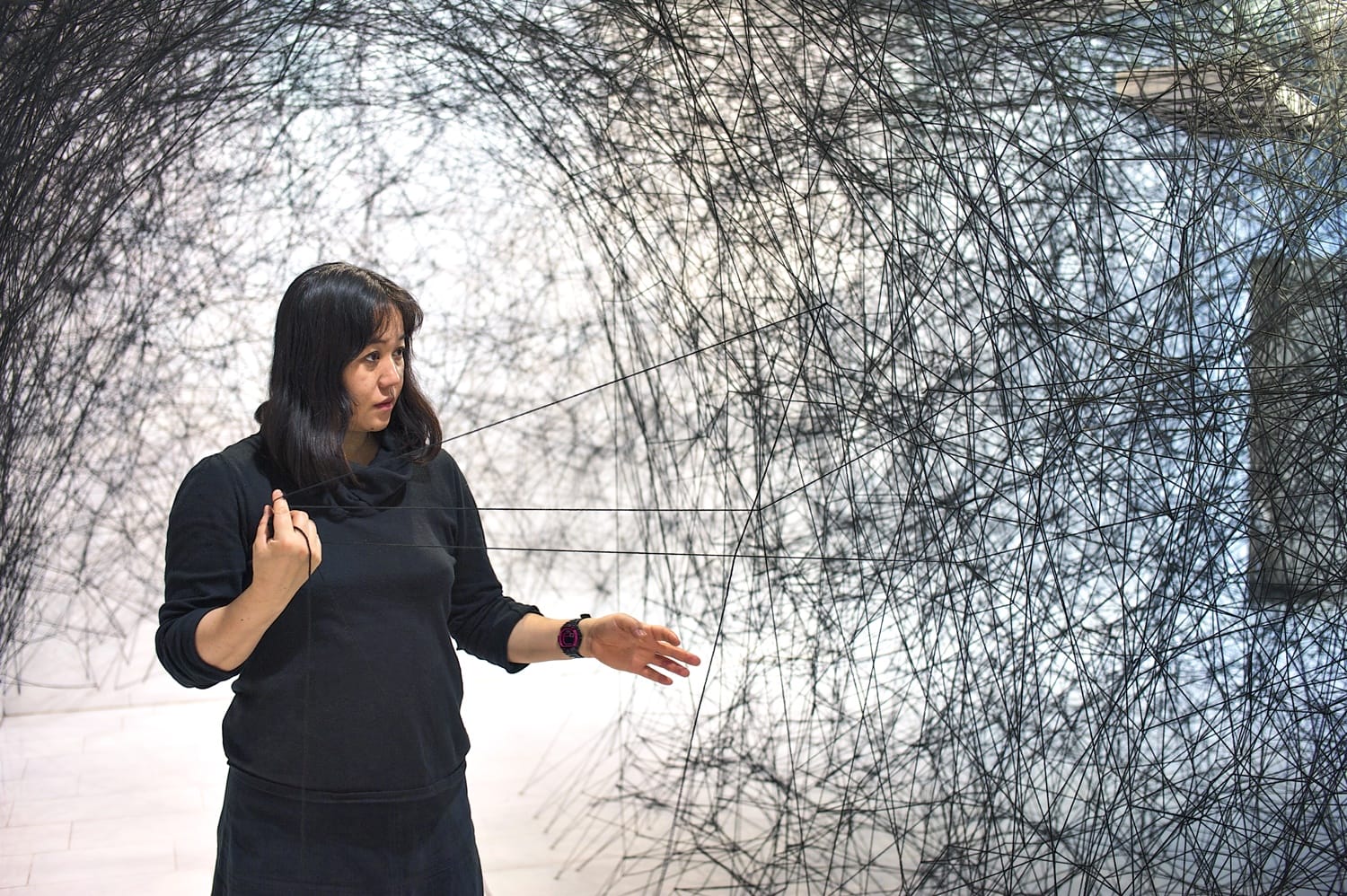
Born in Osaka, Japan, Shiota enrolled in art school to study painting but soon became disillusioned with the medium. “Painting has such a rich history, but it did not feel like part of my history,” she says. “I felt stuck and couldn’t move forward.”
Following years spent living in Australia, she moved to Germany in 1997 to study under the doyenne of performance art, Marina Abramović, whose influence can be seen in Shiota’s early endurance-based performances like Try and Go Home (1998), where she smeared her body with earth and fasted for four days. “I started to create art with my body, and one day when I felt restless I used a ball of yarn and began weaving in my bedroom,” Shiota says. “It was like I was drawing in the air—I extended the line from the painting into space. I didn’t have any limitations.”
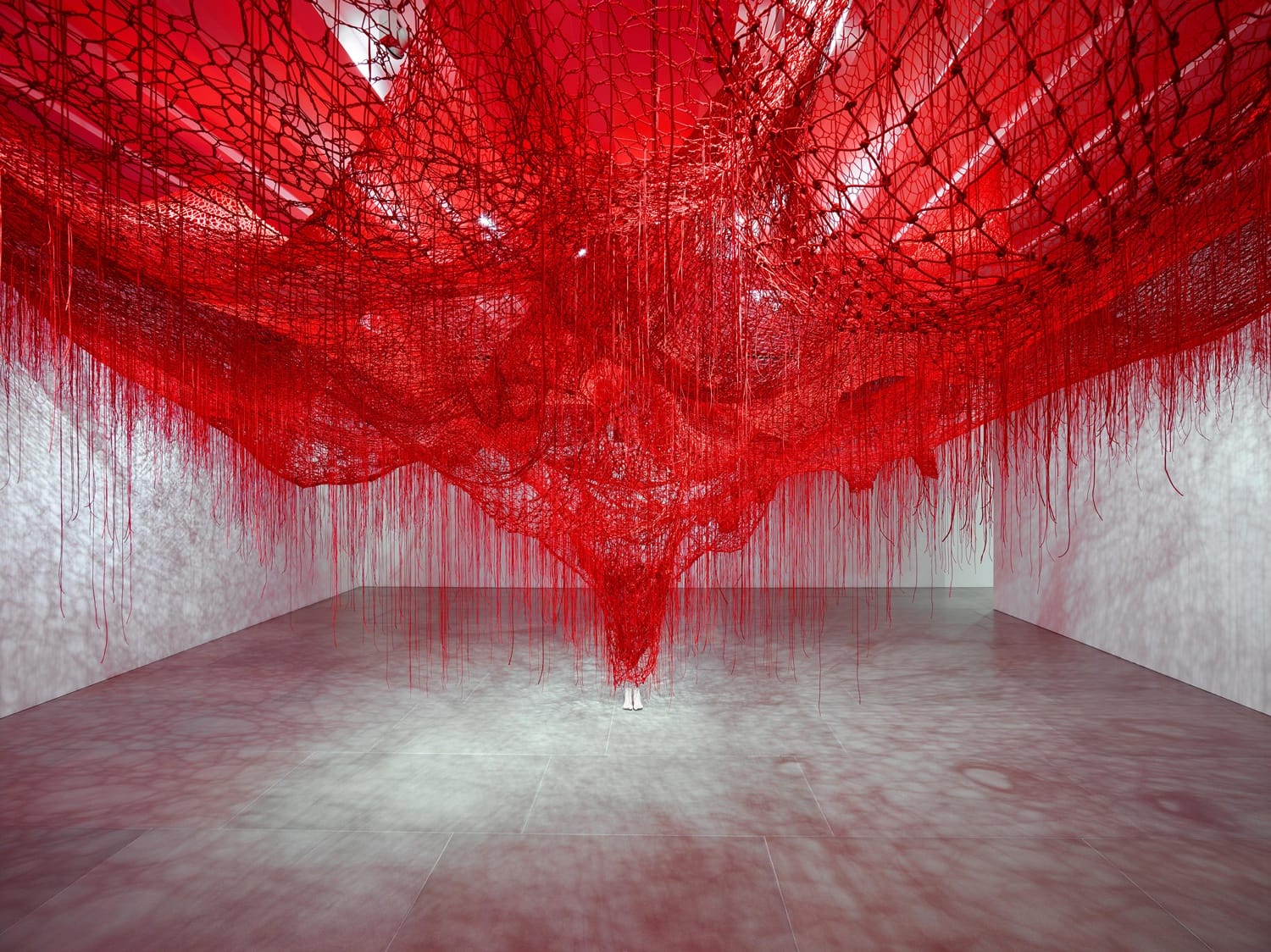
Twenty years later, the artist’s work, which has been displayed in some 250 exhibitions at museums and galleries, retains a performative quality. “Creating is very meditative. I create a triangle pattern, like a drawing, painting the same line again and again,” she explains of her installations, which can take up to two weeks to spin. “It can be very tiring, having to concentrate for such a long time.”
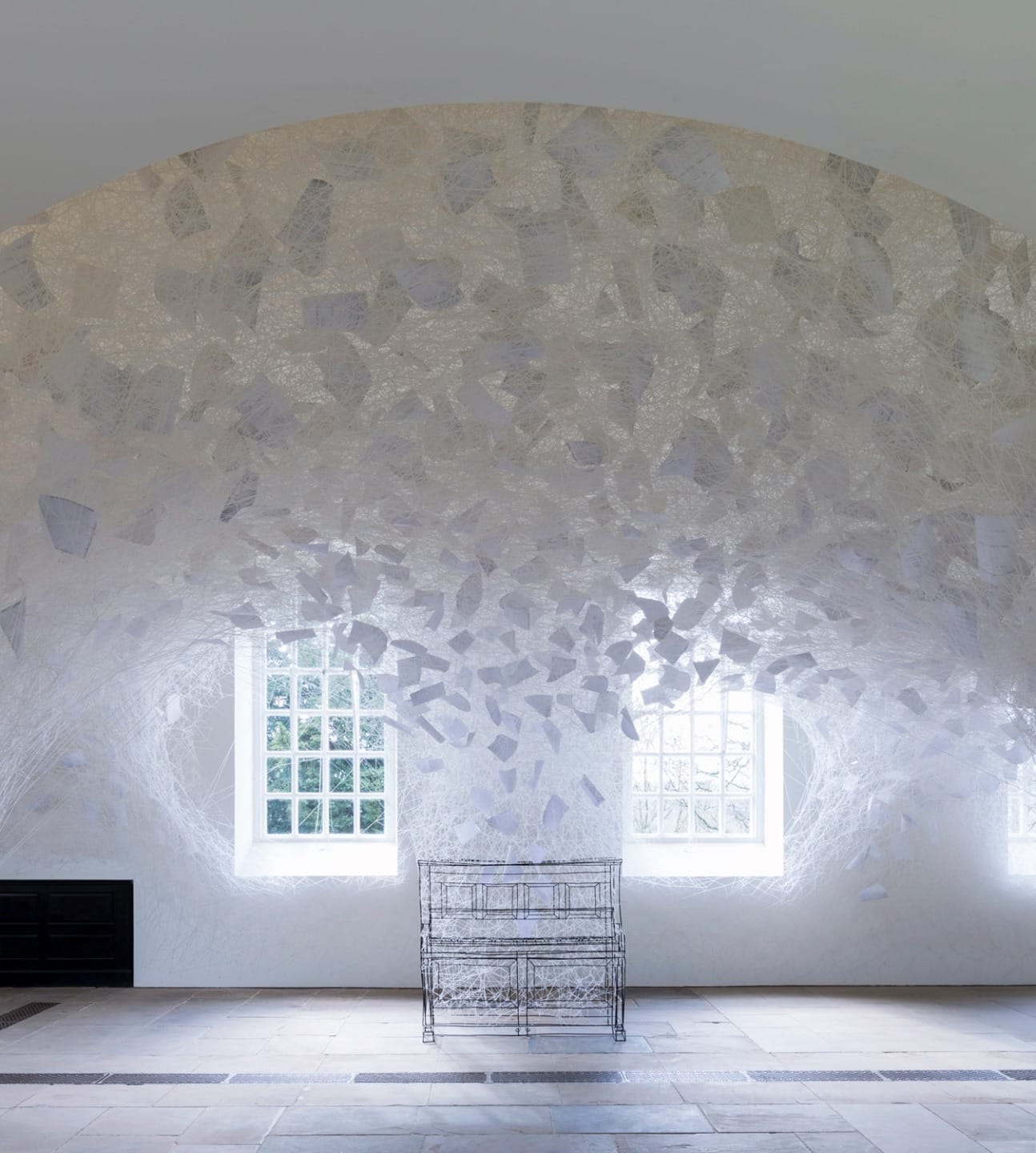
The Mori Art Museum exhibition kicks off with The Key in the Hand from the Japan pavilion at the 2015 Venice Biennale, which ushered Shiota onto the international art stage. In this work, 180,000 keys showered down from the ceiling in tangled bundles of crimson, some caught in the decrepit hulls of wooden boats seemingly trapped in an ominous storm. The keys had been collected from donors all over the world and thus imbued with “countless layers of memory,” Shiota says. An accompanying video of children trying to summon their earliest memories completed the powerful metaphor.
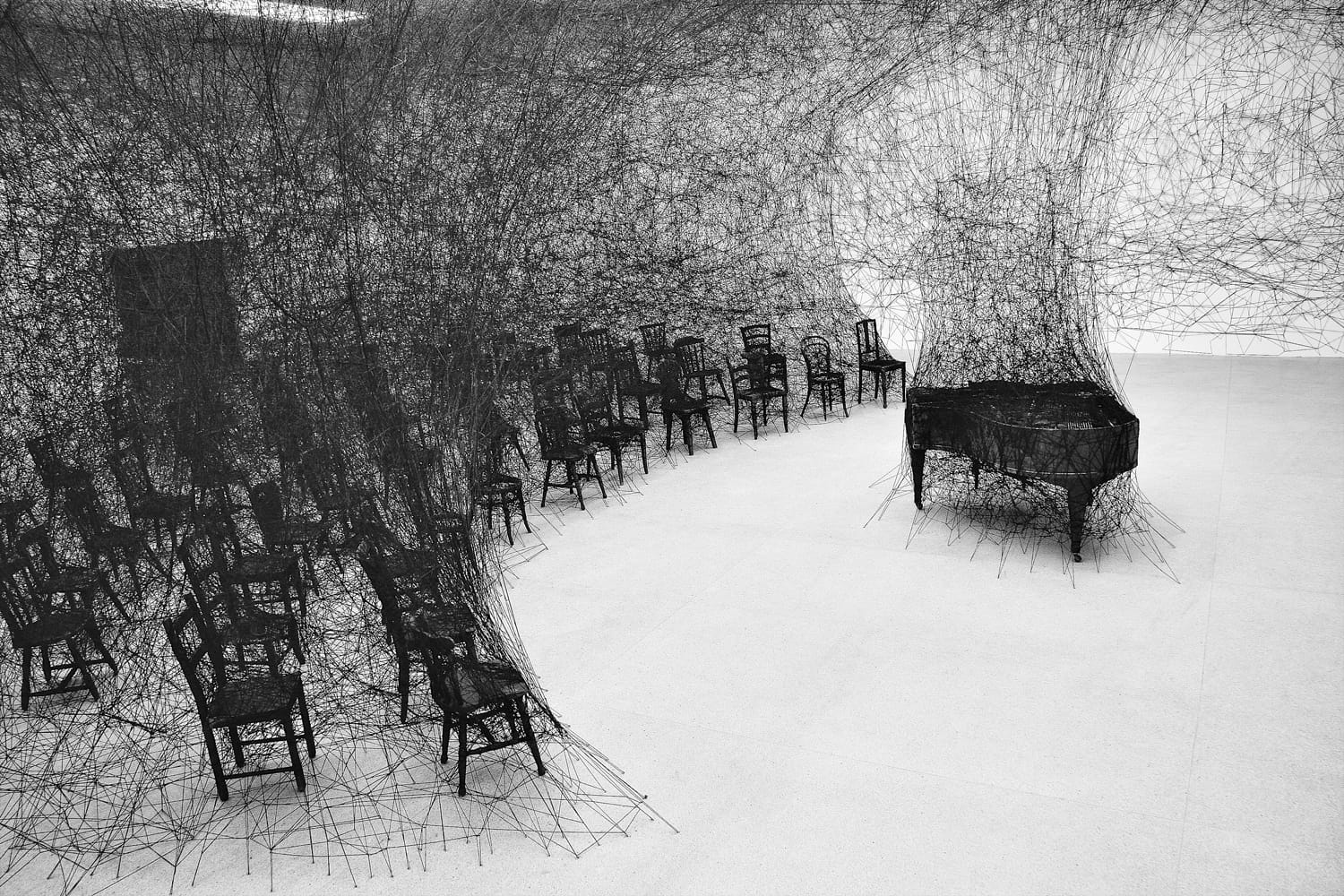
Personal experiences are central to all of Shiota’s work. Sparked by her childhood recollection of the house next door burning down, In Silence features a burned piano and a cluster of chairs spun in black yarn. In the project, first shown at the Centre Pasquart in Switzerland in 2008, the room may be silent but pulsates with a charged energy. For Accumulation—Searching for the Destination, 400 used suitcases are tethered from the ceiling by red rope, a metaphorical connection between the individual and the collective experience. One of her most recent installations, Where Are We Going?, is a heavenly vision of white wool, wire, and rope boats, which floated across the center of the Parisian department store Le Bon Marché in 2017. “My work is always deconstructed at the end,” says Shiota. “But I never feel sad or disappointed because my installations live on in the visitor’s memory.”
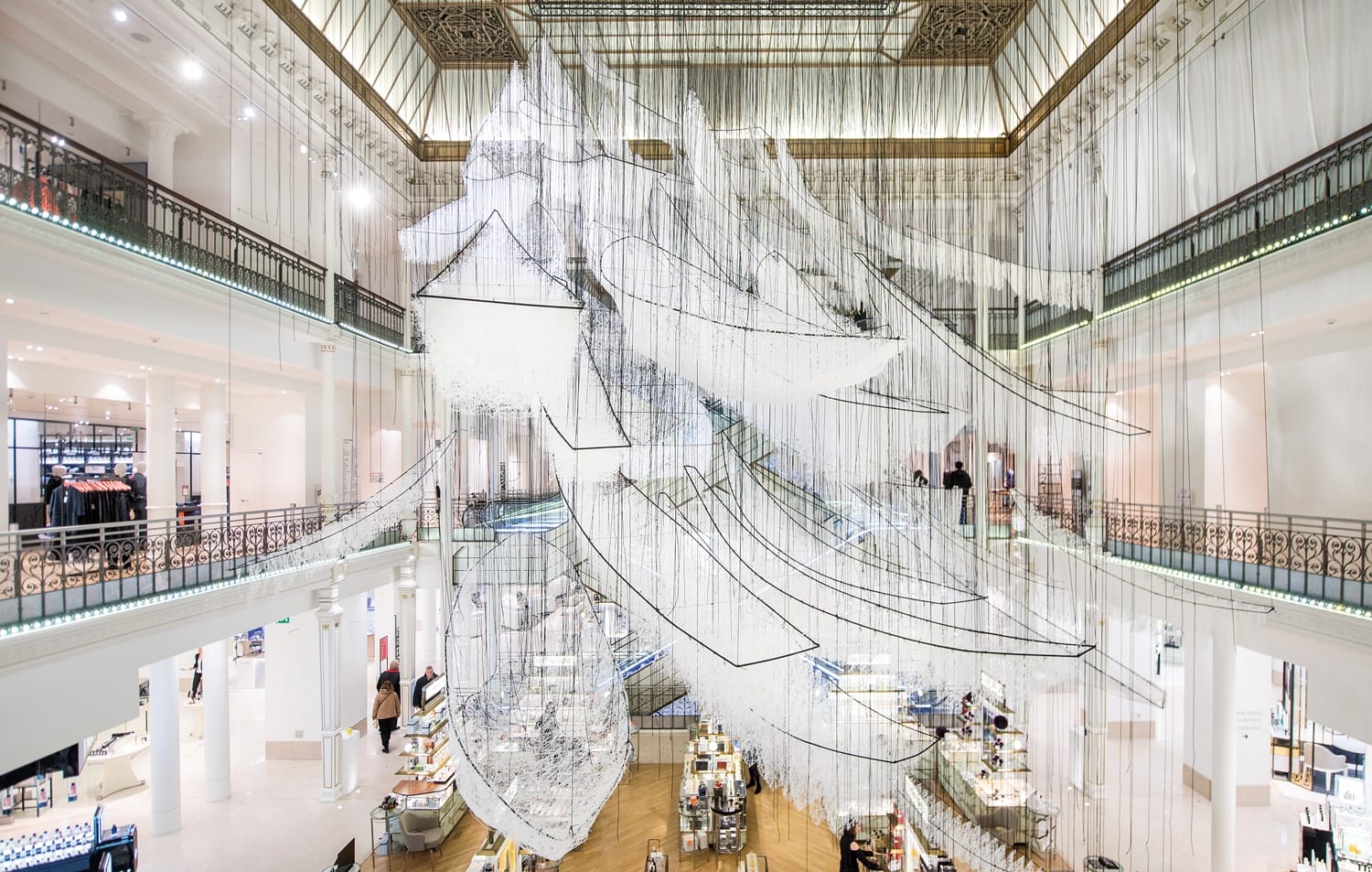
A version of this article first appeared in print in our 2019 Summer Issue under the headline String Theory. Subscribe to the magazine.